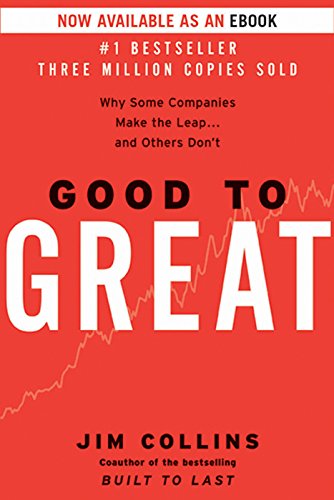

This article is an excerpt from the Shortform summary of "Good to Great" by Jim Collins. Shortform has the world's best summaries of books you should be reading.
Like this article? Sign up for a free trial here .
What are the keys to effective employee management? How do you ensure that your team is professional and disciplined while also being creative and innovative?
We’ll cover the most powerful tools of employee management to help you revolutionize your company, from Jim Collins’s book Good to Great.
Keys to Effective Employee Management
Employee Management Key #1: Team of Rivals vs. Thousand Helpers
What makes a great team great? Collins et al. found that the executive team at good-to-great companies (1) comprised leaders at or near Level 5 and (2) debated with each other vigorously over decisions. This is how to manage employees effectively.
Collins’s evidence suggests that a “team of rivals” approach—in which a leadership group is encouraged to argue enthusiastically with each other—is vital for taking a company from good to great.
The key, however, is making sure the team eventually falls in line behind the final decision. The management team may disagree vehemently on almost everything in the runup to making a decision, but they must always come together to support whatever decision is reached.
Employee Management Key #2: When It Comes to Great, the Compensation System Doesn’t Matter
One might expect good-to-great companies to employ executive compensation schemes that favor stock options—how else are you going to incentivize executive performance?
But Collins found no correlation between compensation systems and performance: Some good-to-great CEOs were compensated with stock, others with cash. Collins also found a wide range among the good-to-great executives in terms of salary amounts and bonus incentives. Money isn’t everything in managing employees effectively.
The only consistent finding Collins turned up was that good-to-great executives tended to be paid less than their comparison counterparts ten years after the transition point.
It all points back to assembling a great team first. As long as the compensation package makes sense, the right executives will work tirelessly to make a company great. Level 5 leaders are driven not by financial incentives but personal principle.
Employee Management Key #3: Disciplined, Not Destructive
Getting the right people on board sometimes means cutting workers, but indiscriminate layoffs can result in good people being jettisoned.
Good-to-great companies operate according to rigorous standards for performance. If a manager or employee isn’t meeting the standard, then that person either needs to shape up or be cut loose. Mass layoffs to preserve capital or restructure the business, however, are rarely found in good-to-great companies. In learning how to manage employees effectively, maintaining a disciplined atmosphere is key.
Despite good-to-great companies’ rigorous expectations, these companies relied far less on head-count layoffs than the comparison companies. Of the 11 good-to-great companies Collins studied, 6 initiated no layoffs at all from ten years before the transition point to 1998, and four others recorded only one or two. Among the comparison companies, layoffs were 5x more common.
Three Ways to Maintain Workforce Discipline
3a. When in doubt, don’t hesitate to pass.
Good-to-great companies don’t compromise on whom they hire—they always want the best fit for an opening, and they’re willing to be patient until they find it. Don’t hire subpar people for the sake of growing quickly.
3b. Know when a personnel change is essential, and act swiftly.
A failsafe sign that the wrong person is on the bus is when you have to start managing that person tightly.
Keeping that person on board just delays the inevitable; it frustrates that person’s team (because they have to pick up the slack), it frustrates you (because you’re constantly having to educate) and, in fact, it frustrates the person (because he or she might be able to flourish elsewhere if terminated).
One alternative to letting the person go is to find a different role for the person. If the person is willing and able, you might end up saving yourself the hassle of filling a hole. But if the person doesn’t rise to the occasion, the only solution might be to part ways. The key is to act, before the problem ramifies.
3c. Save your best opportunities for your best people.
It’s common sense to put your best people on your biggest problems, because they’re the most likely to fix the problem. But to be great, you have to put your best people on your biggest opportunities, not your biggest problems.
For example, Philip Morris’s Joe Cullman transferred one of his most able managers from the company’s booming domestic division to its minuscule international business. The manager ran with it, turning Marlboro into the best-selling cigarette internationally three years before it took top honors in the U.S.
Employee Management Key #4: Devotion Is the Payoff
Beyond the material benefits of getting the right people on the bus, there are interpersonal benefits as well: Good-to-great managers love what they do, love the companies for which they do it, and love the people with whom they get to do it.
Collins found that good-to-great leaders described their executive tenures as love affairs or the high points of their lives. They relished coming into work and sharing their careers—and lives—with their colleagues.
Philip Morris’s good-to-great executive team, for example, kept offices at the company even after their retirement, and, despite their disagreements, continued to come into work just to see each other. This is evidence of managing employees effectively.
———End of Preview———

Like what you just read? Read the rest of the world's best summary of "Good to Great" at Shortform . Learn the book's critical concepts in 20 minutes or less .
Here's what you'll find in our full Good to Great summary :
- The 3 key attributes of Great companies
- Why it's better to focus on your one core strength than get spread thin
- How to build a virtuous cycle, or flywheel effect, in your business






